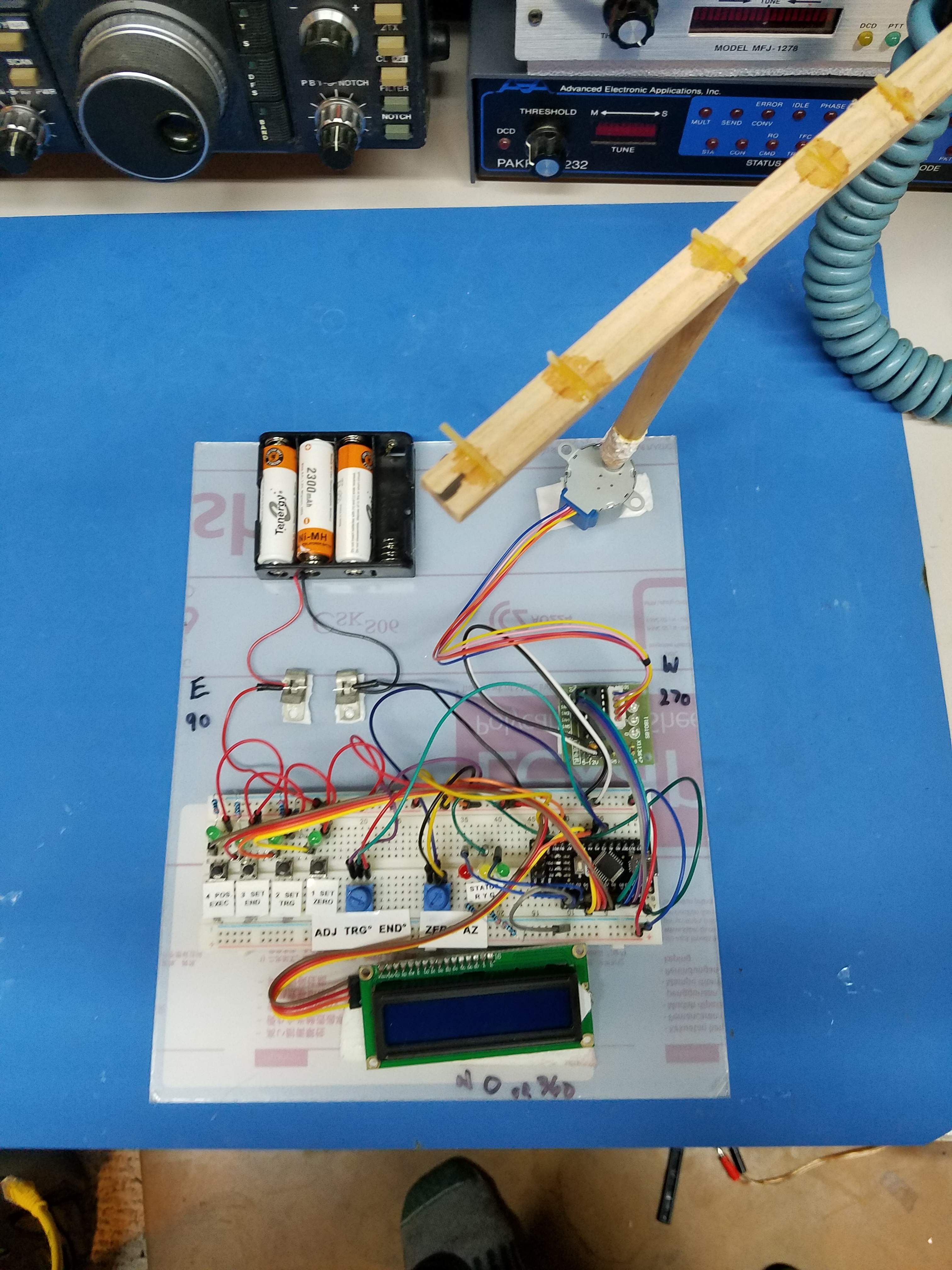SAT TRAC – Part 1 The start of an Idea
The start of an idea

The I.S.S. manual Sat tracker
Over the past 7 years, I’ve been teaching kids about robotics by coaching a FIRST Lego Robotics team (FLL), teaching kids electronics through summer camps, and teaching kids how to design and use 3D printers. My mission? Explore the possibilities. Many kids have not discovered radio and electronics because they have never been exposed to them. Well, when you show them the possibilities, the lights come on, they engage, get excited, and want to learn more. My manual SAT-TRAC project was an advanced project introduced to boys and girls over the last school year. Working from a schematic I created, the students were supplied with a breadboard, LED’s, Arduino Nano, and stepper motor. The students then wired up an Azimuth tracker that would point to the azimuth location of any satellite in the sky once they know the time and degree of acquisition of the signal (AOS) and end of signal point (EOS). This data was found on AMSAT.org. The circuit was fairly simple and required 4 steps to set up the antenna in the correct position to track. We selected the International Space Station (I.S.S.) as our target. Once we found an orbit that would come over us during our meeting time, we zero’ ed our antenna to the north, and set programming to the AOS and EOS. Then we pushed the execute button to rotate the yagi antenna across the horizon. Eight to ten 10 minutes later the antenna parked itself. The LCD showed the progress of the track and return to the home position. The project wasn’t just busywork, but an actual project that could be useful and tracking the I.S.S. in the summer skies. Remembering some article in the ARRL 2019 handbook about building a controller for the Yaesu GS5500 AZ-EL hardware and a couple of articles I found on the web collided in my brain and put me in a trance to make a portable AZ-EL tracker that would sit on a tripod that could be automatically controlled by a laptop. Also, I wanted an RC control ability with telemetry data possibilities from the remote. If that wasn’t enough, I wanted a camera mounted on top and it had to have the ability to run off solar cells and batteries. Whew…. and if it worked, it can be used to show the kids how satellite communications can be accomplished. So here I go… not knowing how to start to create the prototype, this was the beginning of the KD0ZW SAT-TRAC. My head was spinning…

